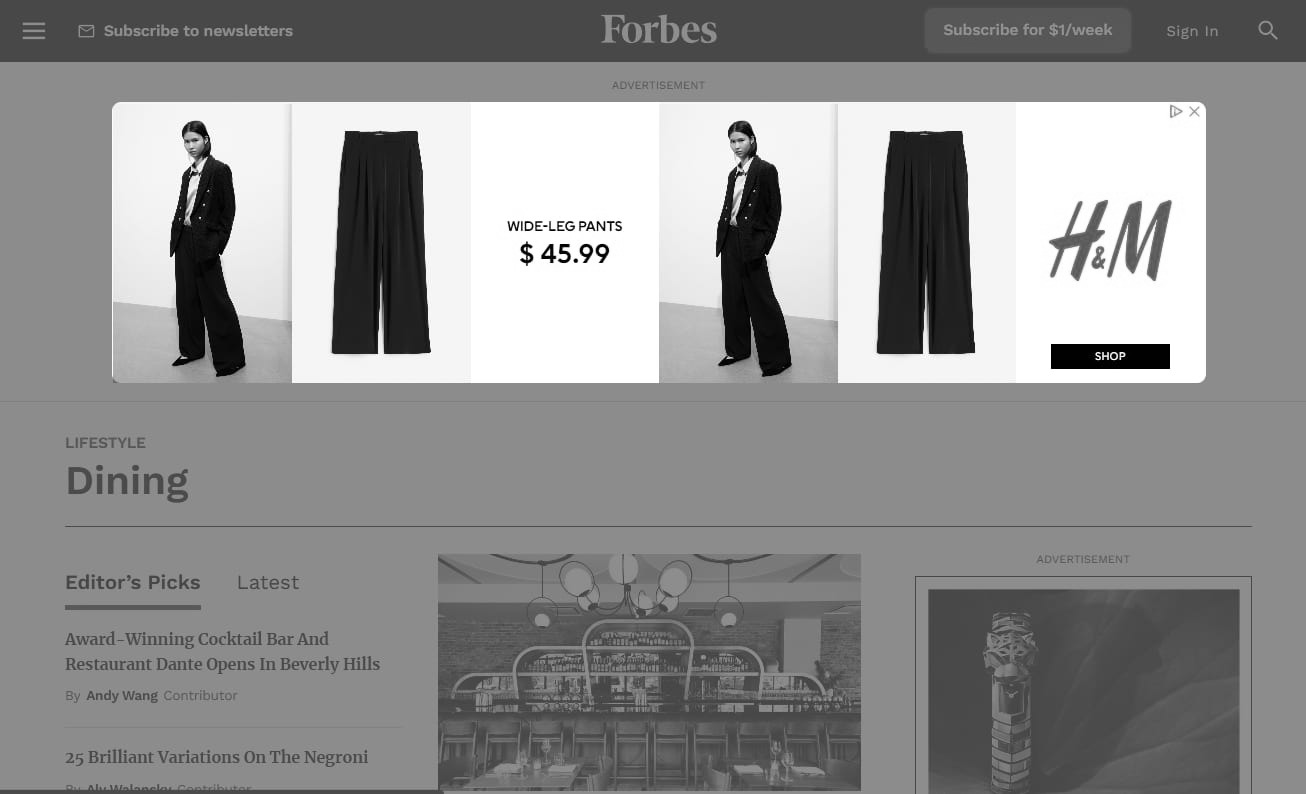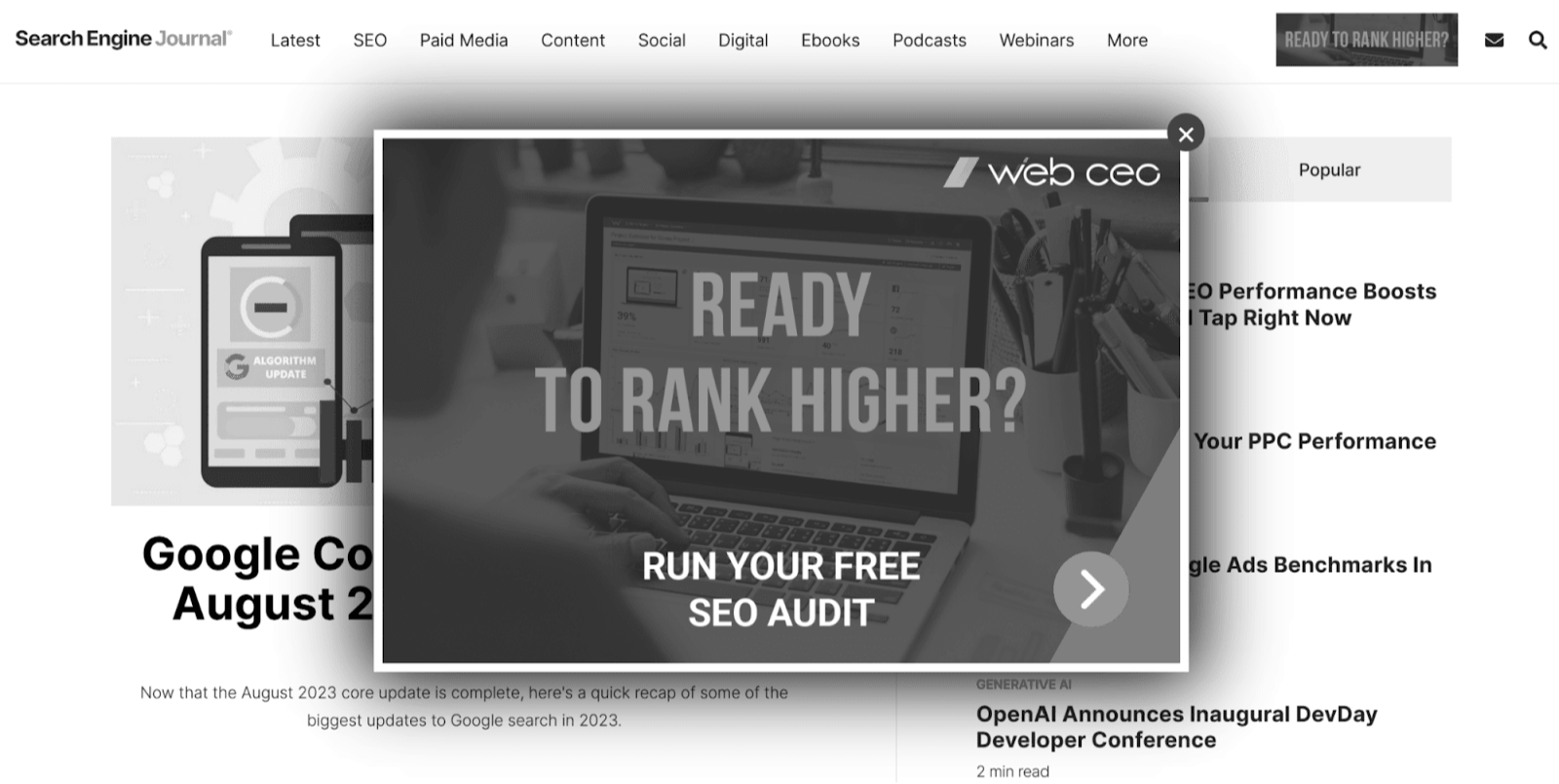brainstrom it pro
Best Design & Development IT Farm
Display ads Marketing
Display Ads: What They Are, Types, & How They Work
Display advertising is a type of advertising that helps you visually showcase your brand or product on various online platforms.
It encourages users to take specific actions. Such as clicking to visit a landing page, filling out a form, or making a purchase.
Here’s a display ad example from Forbes’ homepage:

Display advertising allows you to use a mix of text, images, and videos to get your message across.
It’s also highly scalable.
You can reach a broad audience. Or focus on a niche market by customizing your display ads to show up for specific groups of people based on what they like, where they browse, and who they are.
Display ads appear online when users are already browsing. They show up based on topics and users’ interests.
Display Ads vs. Search Ads – While display ads use visual banners and videos on websites and apps to drive brand awareness and retargeting, search ads appear specifically on search engines based on user queries to generate direct conversions. Display ads are suitable for broad targeting and awareness campaigns, while search ads address users with specific purchasing intent. A combination of both strategies maximizes reach and advertising success.
Here’s an example of search ads:
-modified.jpeg)
This fundamental difference allows display ads to nurture long-term brand recognition. While search ads help achieve immediate conversions.
Here’s an overview that explains what display ads are and how they differ from search ads:
-modified.png)
Benefits of Display Advertising
Display advertising puts your brand in front of a large audience. By strategically placing your ads on websites that align with your target market.
Display ads let you target specific demographics, locations, and behaviors.
This means you can focus your advertising spending on audiences most likely to convert. You’re not just throwing your ad into the digital abyss but placing it where it counts.
Display ads offer a range of creative formats—from simple text and images to interactive elements and videos.
These diverse options allow you to capture your audience’s attention in a way that resonates with them.
Whether it’s a short video clip or an interactive quiz, these formats can make your brand memorable.
Display ads often have a lower cost per impression. You can set your budget and even opt for different pricing models based on your needs.
This level of flexibility and the added benefit of efficient targeting makes display ads relatively affordable.
Types and Formats of Display Ads
Banner ads are graphics that can appear at the top, bottom, or sides of webpages. They leverage a combination of texts and visuals (either static or animated).
Here’s a banner ad example from Investopedia:
-modified.jpeg)
The strategic placement on webpages ensures a large audience sees your banner ads. Which is why they’re suitable for driving traffic to specific pages or building brand identity.
Interstitial display ads are full-screen ads that cover the interface of a website or app.
They usually appear during natural transition points. Like when you’re moving between app screens or waiting for a webpage to load.
Here’s an interstitial display ad example from a mobile gaming app:
-modified.png)
These ads can be images or videos.
They’re hard to ignore, which makes them highly effective for capturing immediate attention. This is why advertisers often use them for promotions or announcements that require quick action.
Pop-up ads are small windows that appear over a website’s content. They can be in the form of static images, text, or even interactive media.
You can set the rules to trigger them. For example, you can set them to appear when a user scrolls halfway down a page or after they’ve been on the site for a certain amount of time.
Here’s an example of a pop-up ad from Search Engine Journal:

Unlike interstitial ads that cover the entire screen, pop-up ads are smaller. Interstitial ads usually appear during transitions, like when a page is loading. In contrast, pop-up ads can show up at specific, predefined moments.
However, because they can interrupt and even harm the user experience, it’s important to use them sparingly to avoid annoying website visitors.
Rich media display ads are interactive ads that can include video, audio, and clickable elements—offering a multilayered experience for your audience.
These ads can do things like expand when you hover over them or play a video when clicked. This makes them more engaging than standard ads, which are usually just static images or text.
Here’s an example of a rich media ad where the user can slide a bar across the ad to reveal the function of the product:
-modified.webp)
With rich media ads, you can incorporate features like forms or quizzes directly within the ad. Which allows you to gather data or even make sales without requiring the user to leave the page they’re on.